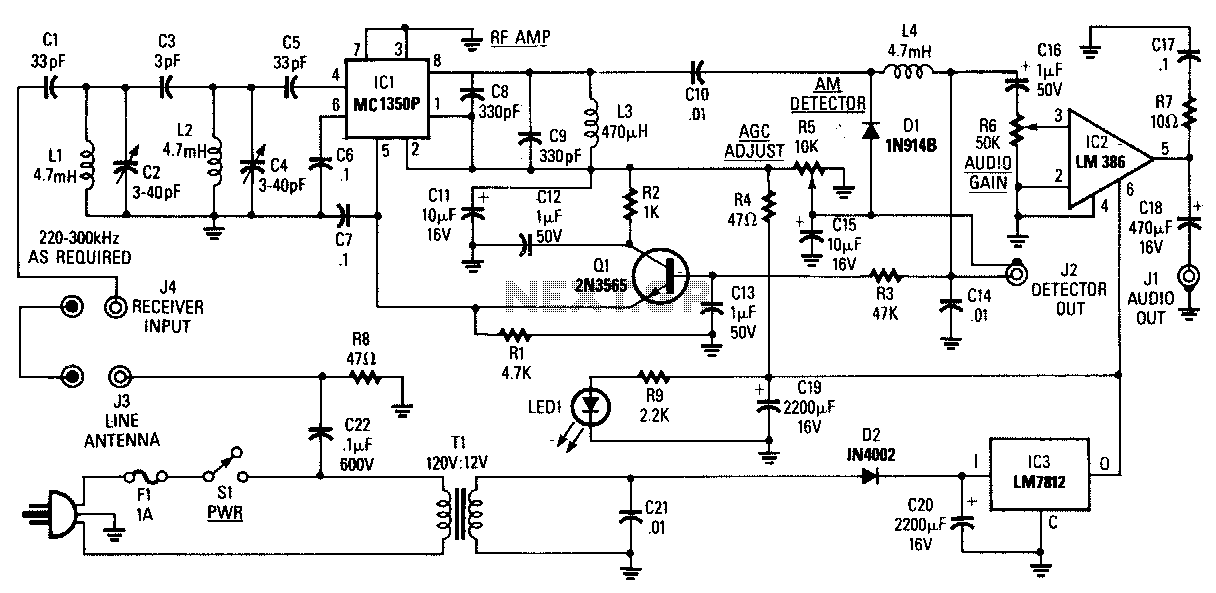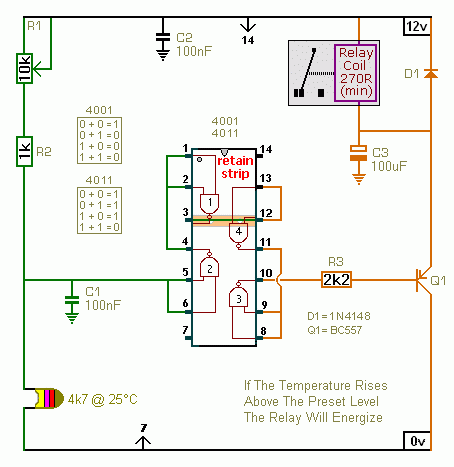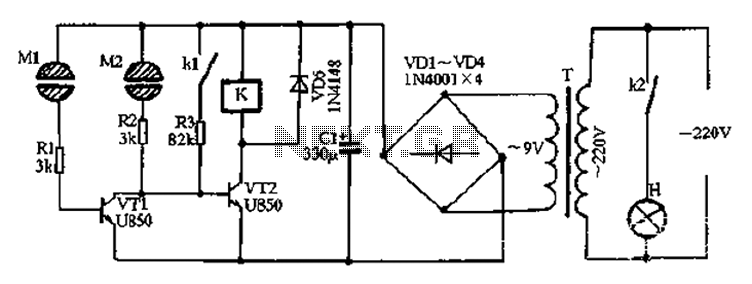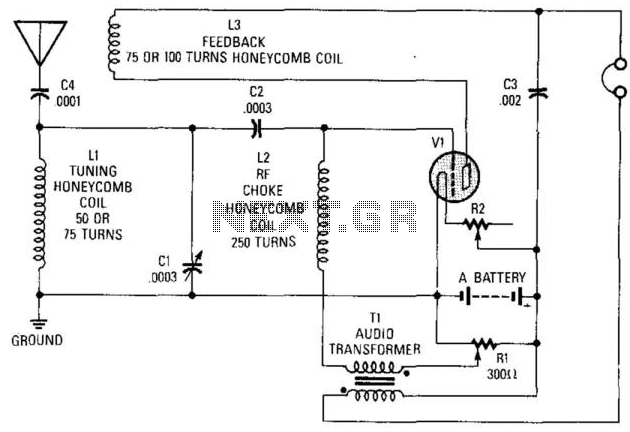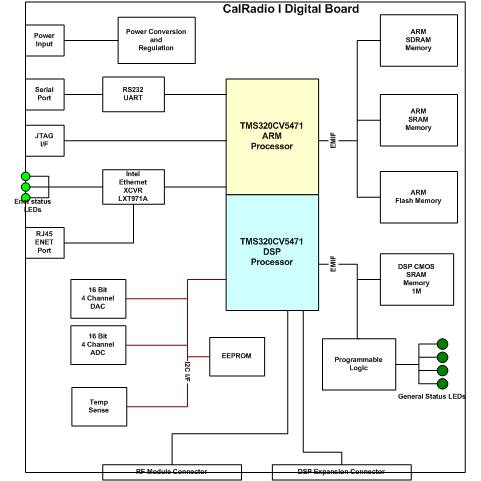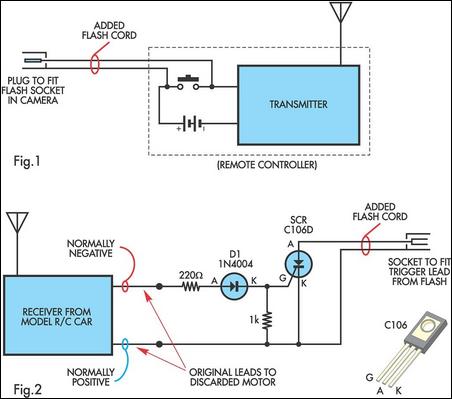
Two Transistors AM Radio Receiver
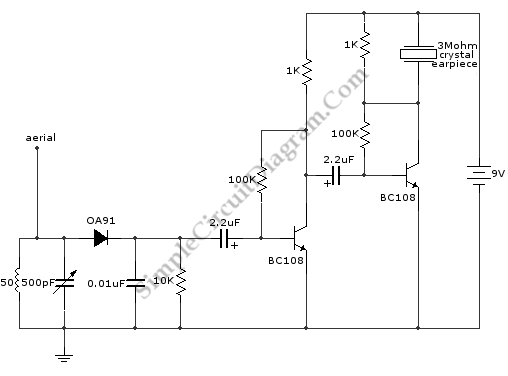
An AM radio receiver can be constructed using only two active components, operating in the Medium Wave (MW) band. The circuit employs a straightforward receiver configuration.
The described AM radio receiver circuit leverages a minimalist approach by utilizing just two active components, typically a transistor and a diode, to achieve reception in the Medium Wave frequency range. The basic configuration consists of a tuned circuit, which is essential for selecting the desired radio frequency. This tuned circuit can be formed using a combination of inductors and capacitors, which are adjusted to resonate at the frequency of interest.
In this setup, the transistor serves as the amplifying element, providing gain to the weak signals received from the antenna. The diode functions as a demodulator, converting the amplitude-modulated signal into an audio signal that can be further processed or amplified for listening purposes. The circuit design allows for the direct connection of an audio output device, such as a speaker or headphones, to the output of the transistor.
The simplicity of the circuit makes it suitable for educational purposes, demonstrating fundamental principles of radio frequency reception and signal processing. Additionally, this configuration can be adapted for various applications by modifying component values to tune into different frequencies within the MW band, thus allowing for versatility in radio reception. Proper attention must be given to the layout and grounding of the circuit to minimize noise and interference, ensuring optimal performance.Using only two active components, we can build an AM radio receiver working on MW (Medium Wave) Band. The circuit uses straight receiver configuration, where.. 🔗 External reference
The described AM radio receiver circuit leverages a minimalist approach by utilizing just two active components, typically a transistor and a diode, to achieve reception in the Medium Wave frequency range. The basic configuration consists of a tuned circuit, which is essential for selecting the desired radio frequency. This tuned circuit can be formed using a combination of inductors and capacitors, which are adjusted to resonate at the frequency of interest.
In this setup, the transistor serves as the amplifying element, providing gain to the weak signals received from the antenna. The diode functions as a demodulator, converting the amplitude-modulated signal into an audio signal that can be further processed or amplified for listening purposes. The circuit design allows for the direct connection of an audio output device, such as a speaker or headphones, to the output of the transistor.
The simplicity of the circuit makes it suitable for educational purposes, demonstrating fundamental principles of radio frequency reception and signal processing. Additionally, this configuration can be adapted for various applications by modifying component values to tune into different frequencies within the MW band, thus allowing for versatility in radio reception. Proper attention must be given to the layout and grounding of the circuit to minimize noise and interference, ensuring optimal performance.Using only two active components, we can build an AM radio receiver working on MW (Medium Wave) Band. The circuit uses straight receiver configuration, where.. 🔗 External reference
